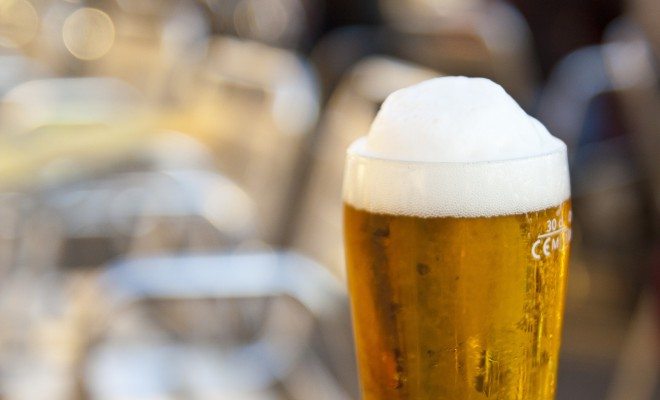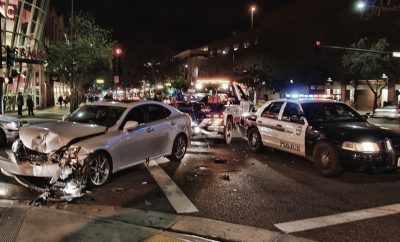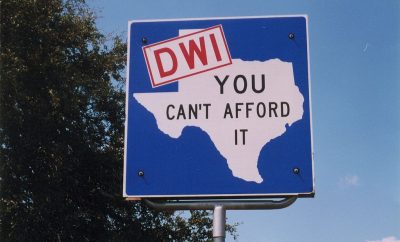 "Beer" courtesy of [Martin Garrido via Flickr]
"Beer" courtesy of [Martin Garrido via Flickr]
Entertainment & Culture
Turn Down for What: Does the Minimum Drinking Age Act Work?
The National Minimum Drinking Age Act, passed in 1984, is turning 30 this year. The law, meant to curb teen drunk driving, has been the topic of debate since it was passed. Read on to learn more about what inspired the law, whether or not it works, and a few unintended consequences.
What is the National Minimum Drinking Age Act
The National Minimum Drinking Age Act of 1984 set the drinking age of every state at 21.
Well, not exactly– congress is not allowed to tell states that they have to make their drinking age a certain number. However, Congress does have power to control spending, including the allocations of funds to states. That’s why this act threatened to cut ten percent of federal highway funding to any state that did not change their drinking age to 21. By 1988, every state had changed their drinking age to 21.
Critics of the law had two main arguments. Some complained that the law was was an intrusion on states’ rights. Others argued that it was not fair that the federal government could call 18 year olds adults when they fight for their country, but not when they want a beer.
Watch the late Senator Frank Lautenberg (D-NJ), author of the National Minimum Wage Drinking Age Act Late, respond to these criticisms on PBS NewsHour.
Why was it passed?
This bill was the end result of a massive campaign by Mothers Against Drunk Driving (MADD) to lower the drinking age.
MADD was started in 1980 by Candy Lightner when her daughter was killed by a repeat drunk driver. The group aggressively lobbied President Reagan and Congress to combat the issue of drunk driving, in part by increasing the drinking age to 21. The problem, in MADD’s eyes, had started a decade earlier. In the 1970s, as a result of the Vietnam War drafting 18-year-olds, some states decided to lower their drinking ages to 18. It only seemed fair; if you could be forced to fight, you should be allowed to drink. However, this led to a sharp spike in drunk driving fatalities.
One major cause was the phenomenon of “blood borders.” These were the borders between states with high drinking ages and states with low drinking ages. Historically, 18 years olds would drive to neighboring states to drink, then while driving back, crash and die. The hope was that raising the drinking age to 21 would lower drunk driving rates.
Has it worked?
Sort of — a Boston University study has shown that, since the drinking age was raised, there have been significantly fewer drunk driving accidents, and a strong majority, 89 percent, of drunk drivers today are between the ages of 21 and 44.
But, lower drunk driving rates are not just limited to those who are banned from drinking. Drunk driving in general has reduced across almost every age group.
As you can see, the most dramatic drop was in the 21-29 age group. The minimum drinking age did not impact them. Admittedly, there was also a notable drop in the 16-20 age group.
This decrease in drunk driving rates for all ages could still be the result of a lower drinking age if young people had stopped drinking. However, according to the Center for Disease Control (CDC), 39 percent of high school students still say they drink. The statistics from the National Institute of Health are even more eye-opening. It states 72 percent of 12 graders have tried alcohol and 85 percent of college students drink, even though they are not 21.
So, if young people are still drinking, why did drunk driving decrease so dramatically? Choose Responsibly, an organization that sparks debate about alcohol laws and supports lowering the drinking age, argues that a mix of seatbelt laws, a lower legal BAC, and public awareness all explain the drop in drunk driving fatalities. They also argue that the drop in alcohol-related fatalities actually started in the 1970s, well before the drinking age was raised to 21.
Have there been any unintended consequences?
Different sources have come to different conclusions. While some say that the higher drinking age has definitely saved lives, others argue that unintended consequences have led to a binge drinking crisis.
According to the earlier mentioned NIH report, “underage drinkers consume, on average, four to five drinks per occasion about five times a month. By comparison, drinkers age 26 and older consume two to three drinks per occasion, about nine times a month.” So, while an adult might have a couple glasses of wine a few times a week, a young person will instead have double that amount once a week. Young people are drinking more alcohol in a shorter timeframe.
Watch this clip to learn about why this trend is so dangerous:
Binge drinking can also indirectly cause dangerous behavior in college students. This includes violence, unprotected sex, and even sexual assault. Choose Responsibly argues that this is a consequence of a high drinking age. If these young people were allowed to drink with adult supervision, they would learn how to drink safely and responsibly. Since drinking is illegal, they have been pushed into the shadows. It’s a lot easier to get dangerously drunk in your friend’s basement than it is at a bar.
The binge drinking trend has led some to call for a repeal, or at least a discussion, of the minimum drinking age. A 137 college presidents are signatories on a statement from the Amethyst Initiative, a group dedicated to lowering the drinking age. The presidents argue that they have seen the negative impact of a high drinking age on their own campuses, including high amount of binge drinking amongst their students.
On this point, the presidents are wrong and right. For one, Americans are binge drinking less than they used to as a whole. However, college students are the only group of Americans that are binge drinking as much as they used to. With this in mind, it makes sense the college presidents would be so concerned about this issue. Their point of view is shaped by their experience with a group that represents an outlier in drinking attitudes nationwide. College students are still binge drinking at higher rates than the rest of the country, but raising the drinking age to 21 seems to have lowered the amount of binge drinking amongst young people who are not in college.
Still, Amethyst presidents are concerned about a culture where college drinkers move from bars, where someone can cut them off, to basements and pre-games that are unregulated and unchecked.
Signatories to the Amethyst Initiative have other reasons to lower the drinking age, mostly philosophical. For one, they believe that forcing young people to drink in secret and violate the law fosters a disrespect for all laws. They also believe that a person who can vote, smoke, marry, and fight for their country should be given all of the responsibilities of adulthood, including drinking.
Conclusion
It’s been 30 years since the National Minimum Drinking Age Act became a law, and it is still hard to measure the act’s impact. It’s difficult to tell how many lives it saved from drunk driving accidents because there are so many other factors. It’s also challenging to figure out if it has really curbed underage and binge drinking. More research needs to be done on the issue before the act can be defined as a success or failure.
Resources
Primary
U.S. Congress: The National Minimum Drinking Age Act of 1984
Additional
Centers for Disease Control and Prevention: Impaired Driving: Get the Facts
Mothers Against Drunk Driving: No More Victims
Fox News: When Drunk Driving Deterrence Becomes Neo-Prohibition
Mental Floss: Why is the Drinking Age 21?
CNN: Drinking Age of 21 Does Not Work
Amethyst Initative: Rethink the Drinking Age
Washington Post: Drinking Age Paradox
Boston University: New Report on Minimum Drinking Age Makes Strong Case for Existing Laws
National Institutes of Health: Underage Drinking Fact Sheet
Choose Responibility: Those Who Choose to Drink Are Drinking More
Center for Disease Control and Prevention: Binge Drinking Fact Sheet








